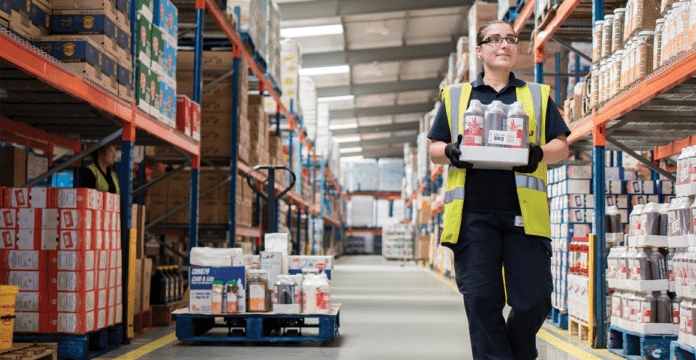David Gilroy asks if cash and carries can effectively serve caterers alongside their retailer customers
The West End comedy ‘One Man Two Guvnors’ is an uproarious romp through a series of ever more tortuous situations, in which the lead character pulled in various directions by two bosses. Wholesalers are in a similar situation when it comes to the needs of retailing and catering bosses.
There was a time when a retail-orientated cash and carry would stock catering products as additional profit lines, after the realisation that a few foodservice customers were walking into their depots. They would then stock bulk larder packs, cleaning products, disposables and 1.5l spirits, alongside crossover lines such as soft drinks and certain snacks.
We all have our favourite places to eat and mine happens to be a local Bangladeshi restaurant. I’ve become friends with the owner and we sometimes talk business.
The other day, he was showing me a brochure that he’d received from a nearby cash and carry that featured a multitude of items – custard powder, gravy mix, sausages, hash browns, cheese slices and brown sauce. However, most of this was of little use to his specific requirements, so why send it to him?
Running any kind of restaurant is deceptively complex. The operator buys goods then prepares and fashions them into a meal. The skills required in the process include safe storage, food safety, preparation, cooking techniques, portion management, food presentation, margin control and front-of-house service.
It begs the question – do wholesalers with a retail heritage have the skills to serve caterers adequately in today’s more complex world?
For starters, there is no such thing as a catering customer. The range of hospitality types covers pubs, bars, quick-serve restaurants, specific national cuisine restaurants, guesthouses, care homes and many more. Each with their own specific set of requirements.
This brings me back to my Bangladeshi restaurant. The marketing to him was ‘one size fits all’ and ineffective. A wholesaler serving retailers alongside caterers can become conflicted. There is more cash margin to be made from retailers but less percentage margin. So, which customer type gets priority? Who gets served first at busy checkouts? Can retail deliveries be routed with catering deliveries? Which ranges are stocked in finite fresh and frozen display cabinet space? Is it necessary to stock both price-marked and un-priced SKUs in, for example, soft drinks and water?
I was recently privileged to be part of a research project into the buying habits of hospitality operators. Strong themes that came through were the relevance of the product assortment, solution-based ranges, reliable and consistent freshness, and deliveries in hours, rather than days. Delivering against these demands is a test for any wholesaler.
It requires dedicated and skilled resources, up-to-the-minute market intelligence and a laser-like focus on the needs of the customer.
This is now a vocation rather than just an add-on offering, and the only way to achieve this level of expertise is to live the experience. The kind of dedication required is to invest in development kitchens, deep learning in all the chosen customer types, multilingual capability and intense training for all customer-facing operators.
This is why the dedicated foodservice and hospitality wholesalers now dominate the sector. The retail skewed cash and carry operators have a choice to either specialise in one catering type, or to instead accept their role as top-up service providers across a few low-risk category types. It’s one man serving one (and a half) guvnor.
David Gilroy is the co-founder and managing director of Store Excel








